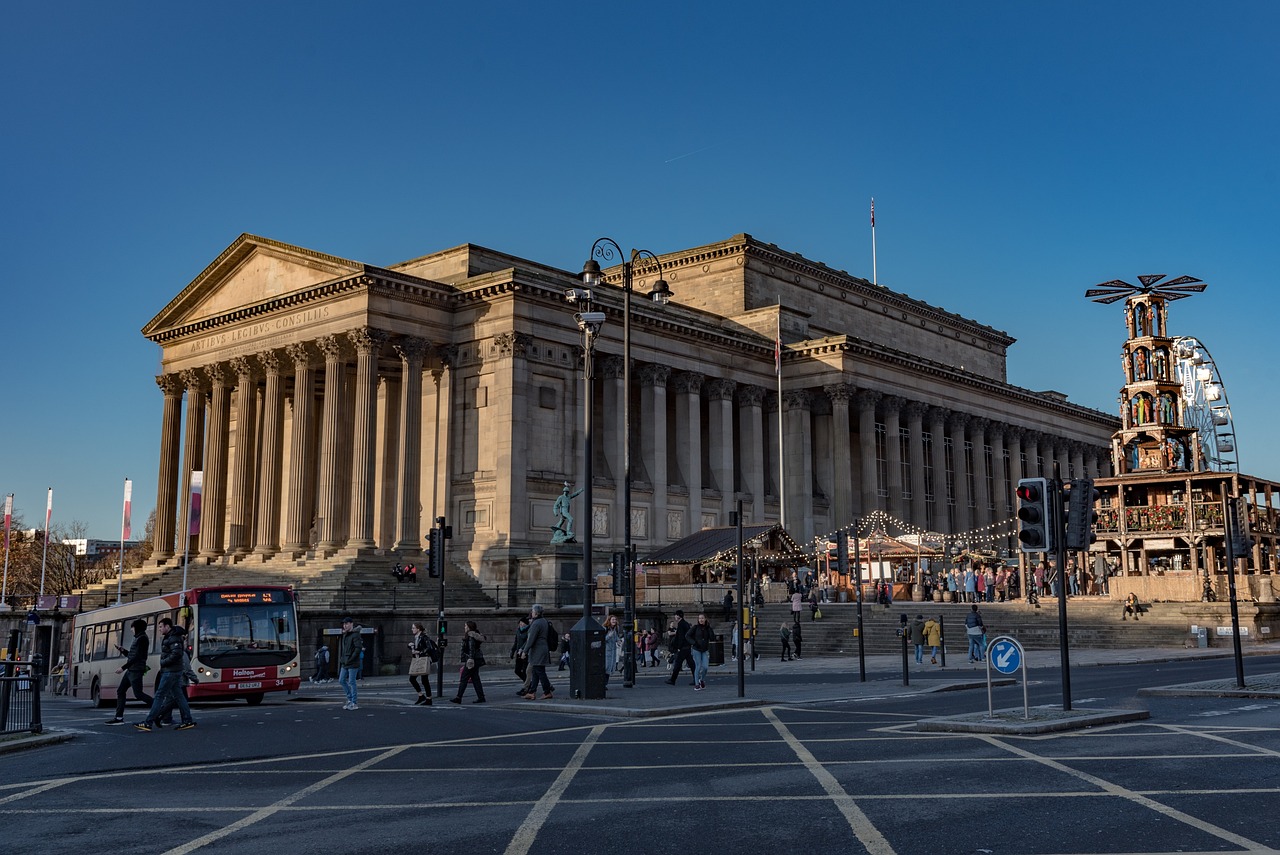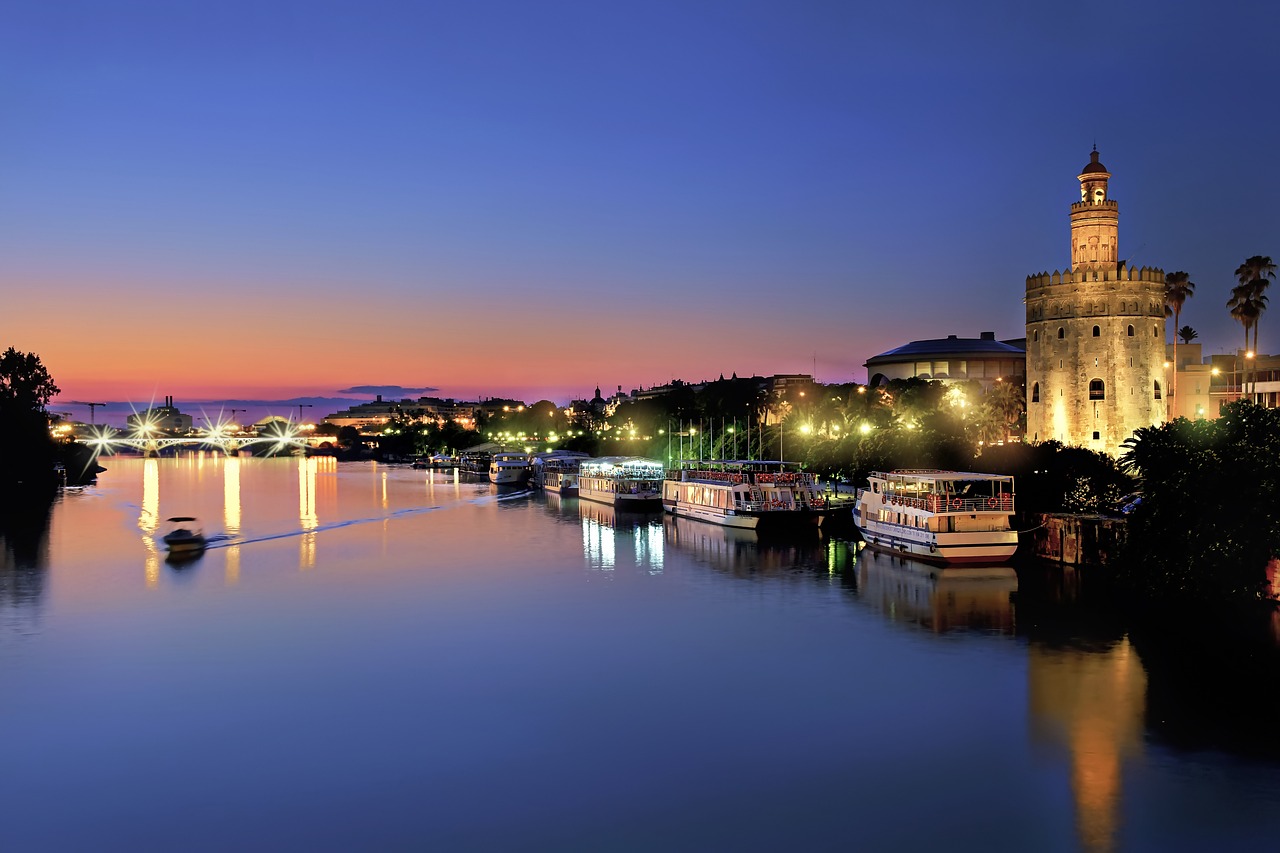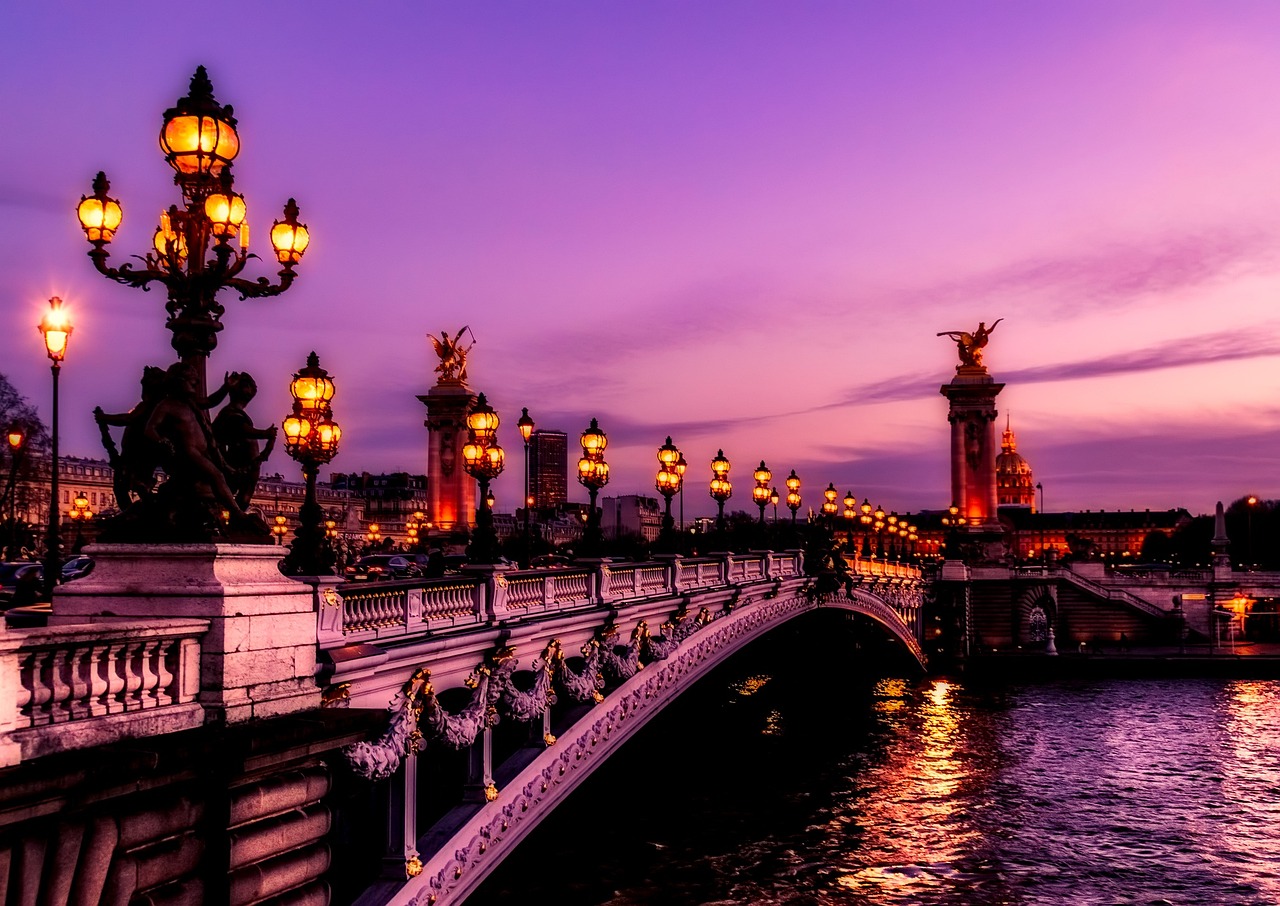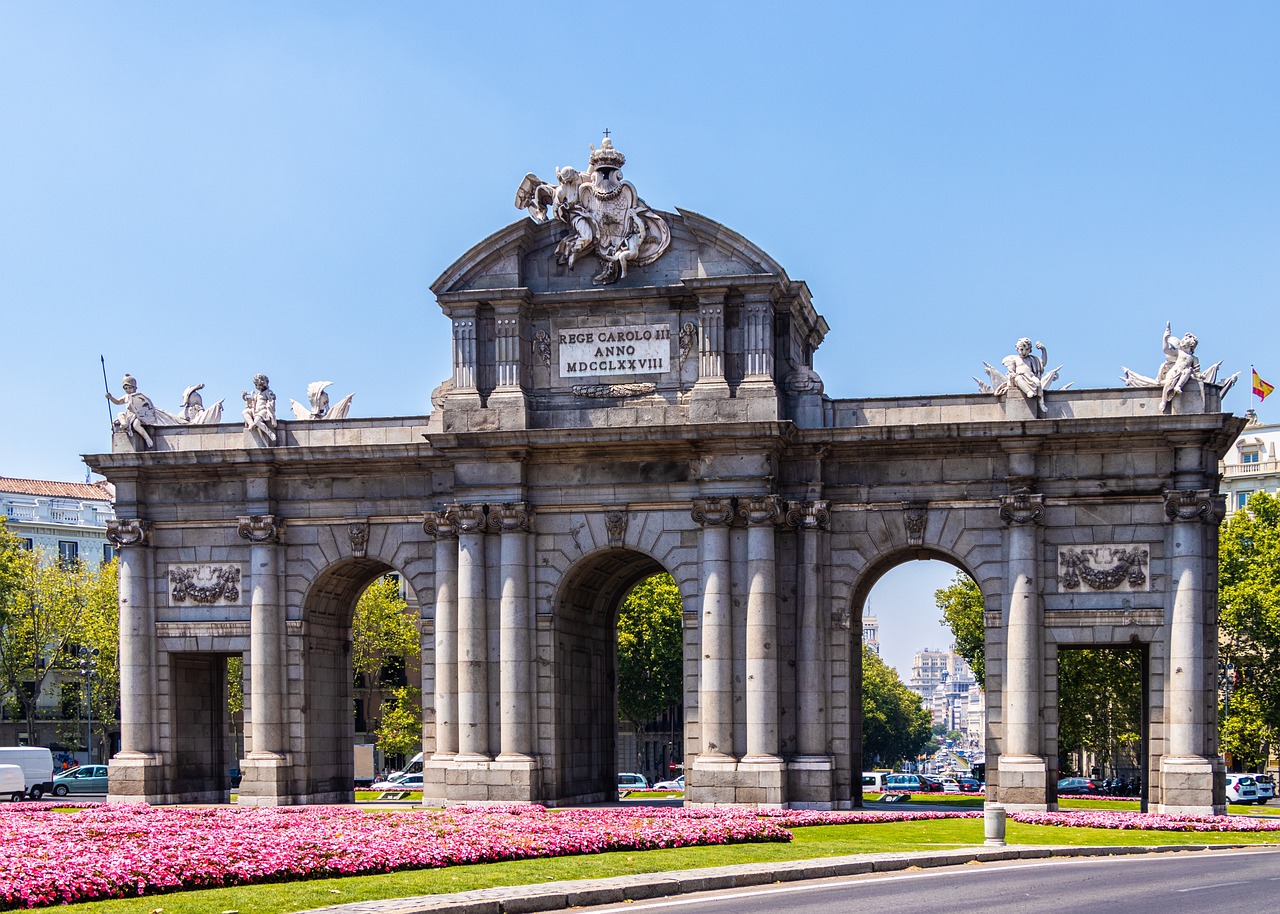Liverpool is a city located in the northwest of England, United Kingdom. It sits on the eastern side of the Mersey Estuary, near the Irish Sea. Liverpool is a major port city and is known for its rich maritime history, diverse cultural scene, and association with the Beatles. It is the fourth-largest city in England, after London, Birmingham and Glasgow, and has a population of over 500,000 people. Liverpool is also home to two Premier League football clubs, Liverpool F.C. and Everton F.C.
Short History
Liverpool has a long and rich history dating back to the medieval period. It began as a small fishing village and gradually grew into an important trading center, due to its location on the River Mersey. In the 18th and 19th centuries, Liverpool played a key role in the transatlantic slave trade, with many ships departing from its port to transport enslaved Africans to the Americas.
During the Industrial Revolution, Liverpool became a major hub for manufacturing, as well as for trade and shipping. Its economy thrived, and it became one of the wealthiest cities in the world. The city also played a significant role in the two world wars, as a major port for the Allies.
In the latter half of the 20th century, Liverpool faced economic decline, but in recent decades has undergone significant regeneration and transformation. Today, it is a thriving city known for its vibrant culture, architecture, and music scene. Its port remains a major hub for global trade, and it is home to many world-renowned attractions, such as the Liverpool Cathedral, the Albert Dock, and the Beatles Story museum.
Architecture
The architecture of Liverpool is diverse and reflects the city’s rich history, from its medieval origins to its industrial past and modern-day revitalization. Here are some of the most notable examples:
- Liverpool Cathedral – This iconic Anglican cathedral is one of the largest in the world and is known for its Gothic Revival style.
- St. George’s Hall – This Neoclassical building is a Grade I listed building and serves as a concert venue and civic center.
- Royal Liver Building – This iconic building, located on the city’s waterfront, is known for its distinctive clock tower and Liver Birds.
- Port of Liverpool Building – Another of the “Three Graces” on the waterfront, this building has an ornate Beaux-Arts style and was completed in 1907.
- Albert Dock – This complex of restored warehouses and buildings dates back to the 19th century and is now home to museums, galleries, restaurants, and shops.
- Metropolitan Cathedral of Christ the King – Also known as the “Paddy’s Wigwam,” this modernist cathedral was completed in 1967 and is known for its unique design.
- RIBA North – This modern building is the headquarters of the Royal Institute of British Architects and is known for its striking design, which resembles a ship’s hull.
Liverpool’s architecture is a mix of historic and modern styles, with many notable examples of Gothic, Neoclassical, and contemporary design. Its buildings and landmarks are a testament to the city’s rich history and cultural significance.
Museums and Galleries
Liverpool is a city that is rich in culture and history, and its museums and galleries reflect this. Here are some of the most interesting museums and galleries in Liverpool:
- The Beatles Story – This museum explores the history of the Beatles, the famous Liverpool band that became a global phenomenon.
- World Museum Liverpool – This museum houses collections of natural history, science, and world cultures, including Egyptian mummies and live animals.
- Walker Art Gallery – This gallery has an extensive collection of art, including works by Rembrandt, Hockney, and Freud.
- Merseyside Maritime Museum – This museum is dedicated to Liverpool’s maritime history and houses exhibits on shipbuilding, the slave trade, and the Titanic.
- Tate Liverpool – This gallery showcases contemporary and modern art, with a focus on British and international artists.
- Museum of Liverpool – This museum explores Liverpool’s history, culture, and people, and has exhibits on everything from football to fashion.
- International Slavery Museum – This museum is part of the Merseyside Maritime Museum and focuses on the history and legacy of the transatlantic slave trade.
- Victoria Gallery & Museum – This museum is located in a historic building and houses collections of art, ceramics, and scientific instruments.
Liverpool has a wealth of museums and galleries that offer visitors the chance to explore the city’s rich culture, history, and art. From the Beatles to maritime history to contemporary art, there is something for everyone to discover.
Landmarks and Monuments
Liverpool is a city with a rich history and cultural significance, and its landmarks and monuments reflect this. Here are some of the most interesting landmarks and monuments in Liverpool:
- Liverpool Cathedral – This iconic Anglican cathedral is one of the largest in the world and is known for its Gothic Revival style.
- St. George’s Hall – This neoclassical building is a concert venue and civic center and is known for its grand architecture.
- Royal Liver Building – This iconic building, located on the city’s waterfront, is known for its distinctive clock tower and Liver Birds.
- The Three Graces – This group of three buildings on the waterfront includes the Royal Liver Building, the Cunard Building, and the Port of Liverpool Building.
- Albert Dock – This complex of restored warehouses and buildings dates back to the 19th century and is now home to museums, galleries, restaurants, and shops.
- Liverpool Town Hall – This grand building is located in the city center and is used for civic events and functions.
- Cavern Club – This historic music venue is where the Beatles performed in their early years and is still a popular spot for live music.
- Anfield Stadium – This iconic stadium is home to Liverpool Football Club and is known for its electrifying atmosphere on match days.
Liverpool’s landmarks and monuments are a testament to the city’s rich history and cultural significance. From grand civic buildings to music venues to football stadiums, there is plenty to discover in this vibrant city.
Parks and Green Spaces
Liverpool is a city with a number of parks and green spaces, offering visitors the chance to escape the bustle of the city and enjoy nature. Here are some of the most notable parks and green spaces in Liverpool:
- Sefton Park – This 235-acre park is known for its Victorian palm house, boating lake, and rose garden.
- Stanley Park – This park features a lake, a conservatory, and sports facilities, as well as the Grade II-listed Isla Gladstone Conservatory.
- Calderstones Park – This park has a range of attractions, including a historic mansion, a lake, and a walled garden.
- Princes Park – This 65-acre park has a lake, sports facilities, and a children’s play area.
- Croxteth Hall and Country Park – This park includes the historic Croxteth Hall mansion, as well as a working farm, a walled garden, and nature trails.
- Newsham Park – This park is known for its Victorian boating lake and bandstand.
- Everton Park – This park offers panoramic views of the city, as well as a nature garden and a children’s playground.
Liverpool has a range of parks and green spaces to suit all tastes, from large Victorian parks to smaller neighborhood parks. Whether you’re looking for a place to relax or to explore nature, there are plenty of options to choose from in this vibrant city.
Shopping Districts
Liverpool is a vibrant city that offers a range of shopping experiences, from high-end boutiques to independent shops and markets. Here are some of the most notable shopping districts in Liverpool:
- Liverpool ONE – This shopping complex is located in the heart of the city and features over 170 shops, restaurants, and bars.
- Bold Street – This street is known for its independent shops, cafes, and restaurants, and is a popular destination for those looking for unique and eclectic finds.
- The Metquarter – This luxury shopping center is home to designer brands such as Hugo Boss, Jo Malone, and MAC.
- Cavern Walks – This boutique shopping center is located near the Cavern Club and features high-end fashion and accessory stores.
- Lark Lane – This bohemian street is lined with independent shops, cafes, and bars, and is a popular destination for vintage clothing and artisanal goods.
Liverpool’s shopping districts offer a range of options for visitors, from high-end luxury brands to independent shops and markets. Whether you’re looking for designer fashion or unique finds, there is something for everyone in this vibrant city.
Food and Drink
Liverpool has a rich culinary tradition, with a range of delicious foods and drinks to try. Here are some of the most popular dishes and beverages to sample in Liverpool:
- Scouse – This hearty stew is a Liverpool staple, made with beef or lamb, potatoes, carrots, and onions.
- Liverpool Gin – This award-winning gin is made with botanicals such as citrus and coriander and is distilled locally.
- Fish and chips – This classic British dish is a must-try in Liverpool, with many local fish and chip shops to choose from.
- Liverpool Tart – This sweet pastry is made with shortcrust pastry, lemon filling, and a meringue topping.
- Liverpool Pale Ale – This local beer is brewed with British hops and has a hoppy, citrusy flavor.
- Bangers and Mash – This dish features sausages served with mashed potatoes and onion gravy.
- Whisky – Liverpool has a number of bars that offer a wide selection of whiskies from around the world.
Liverpool offers a range of delicious dishes and drinks that reflect its culinary heritage and local produce. Whether you’re in the mood for hearty stews or refreshing gin cocktails, Liverpool has something to satisfy your taste buds.
Transportation
Liverpool is a compact city that is easy to navigate, with a range of transportation options available. Here are some of the best ways to move around Liverpool:
- Walking – Liverpool is a walkable city, with many of its attractions within a short distance of each other. Walking is a great way to explore the city’s streets and neighborhoods, and many of the city’s parks and green spaces are also within walking distance.
- Public transport – Liverpool has an extensive public transport network, including buses, trains, and ferries. The Merseytravel website offers information on routes, timetables, and fares.
- Taxis – Taxis are widely available in Liverpool, with many licensed taxi companies operating in the city. Uber and other ride-sharing services are also available.
- Bicycles – Liverpool has a bike-sharing scheme called Citybike, which offers a low-cost way to get around the city on two wheels.
- Car rental – Car rental companies are available in Liverpool, and renting a car is a good option for exploring the surrounding countryside and coastal areas.
Liverpool offers a range of transportation options to suit all needs and budgets. Whether you prefer to walk, take public transport, or drive, getting around the city is easy and convenient.
City Safety
Liverpool is generally considered a safe city to visit, but like any city, it is important to take common-sense precautions to stay safe. Here are some tips to keep in mind:
- Be aware of your surroundings and trust your instincts. If you feel uncomfortable in a certain area, move on to a different location.
- Avoid walking alone late at night, especially in poorly lit areas.
- Keep your valuables such as wallets, phones and cameras secure and out of sight.
- Stay in well-lit and busy areas if possible, particularly at night.
- Be cautious when using ATMs and avoid carrying large amounts of cash.
- When travelling on public transport, be mindful of your belongings and try to sit near the driver.
- Respect local customs and laws to avoid any potential trouble.
Overall, Liverpool is a safe city to visit, and taking basic safety precautions can help ensure a trouble-free visit. It is always a good idea to stay informed about the latest travel advice and to be vigilant at all times.
Expensive or Cheap
Compared to some other cities in the UK, Liverpool is generally considered to be a reasonably priced destination, with a range of options available to suit different budgets. Here are some typical costs to give you an idea:
- Accommodation: Prices for hotels and other accommodation can vary widely depending on location, amenities, and time of year. Budget options can be found for around £50-£70 per night, while more luxurious hotels can cost upwards of £150 per night.
- Food and Drink: Eating out in Liverpool can be relatively affordable, with many pubs and restaurants offering affordable options. A typical meal in a mid-range restaurant can cost between £10-£20 per person. Drinks prices are generally similar to other UK cities.
- Attractions: Many of Liverpool’s attractions are free, including museums and galleries such as the Liverpool Museum and the Tate Liverpool. Paid attractions such as the Beatles Story or the Liverpool Cathedral charge admission fees ranging from £5-£20 per person.
- Transport: Public transport in Liverpool is reasonably priced, with a single bus fare costing around £2.50 and a day pass costing around £5. Taxis and ride-sharing services are also available at similar prices to other UK cities.
While Liverpool can be an affordable destination, costs can vary widely depending on your travel style and preferences. By planning ahead and doing some research, it is possible to have an enjoyable trip without breaking the bank.
Best Time to Travel
The best time to travel to Liverpool depends on your personal preferences and what you plan to do during your visit. Here are some things to consider when deciding on the best time to visit:
- Weather: Liverpool has a temperate maritime climate, with mild temperatures throughout the year. The summer months of June to August are typically the warmest and driest, with average temperatures around 20°C. The winter months of December to February can be cold and damp, with average temperatures around 5°C.
- Events: Liverpool hosts a range of events throughout the year, including the Liverpool International Music Festival in July and the Liverpool Food and Drink Festival in September. The city is also known for its annual Christmas markets and New Year’s Eve celebrations.
- Crowds: Liverpool can be busy during peak travel season, particularly in the summer months when schools are out and the weather is good. If you prefer to avoid crowds, consider travelling in the shoulder season of April to May or September to October.
Overall, the best time to visit Liverpool depends on your individual preferences and what you plan to do during your visit. Whether you prefer warmer weather, cultural events, or fewer crowds, there is something to suit all tastes in this vibrant city.
Date Ideas
Liverpool is a vibrant and romantic city, with a range of activities and attractions perfect for a date. Here are some date ideas to consider when planning a romantic day out in Liverpool:
- Take a romantic stroll along the Albert Dock, which offers stunning views of the waterfront.
- Visit the Liverpool Cathedral and take in the beautiful architecture.
- Enjoy a picnic in Sefton Park, one of Liverpool’s most beautiful green spaces.
- Explore the city’s history with a visit to the Museum of Liverpool.
- Catch a show at the Liverpool Empire Theatre, a historic venue that hosts a range of performances throughout the year.
- Take a romantic river cruise along the Mersey, offering stunning views of the city.
- Visit the Beatles Story, a museum dedicated to the iconic band and their legacy.
- Take a day trip to the nearby city of Chester, known for its charming streets and historic landmarks.
- Enjoy a meal at one of Liverpool’s many fantastic restaurants, such as the Panoramic 34 restaurant with its stunning views.
- End the night with a romantic drink at a rooftop bar, such as Goodness Gracious, offering panoramic views of the city.
Liverpool offers a range of romantic date ideas, from scenic walks and historic landmarks to cultural experiences and fine dining. Whether you’re looking for a relaxing day out or an action-packed adventure, Liverpool has something to suit all tastes and budgets.
Fun and Interesting Facts
Liverpool is a city located in the North West of England, famous for its rich history, cultural heritage and strong maritime connections. Here are some fun and interesting facts about Liverpool:
- Liverpool is the birthplace of the Beatles, the most successful and influential band in the history of popular music.
- The city has the largest national museum collection outside London, with notable museums such as the Tate Liverpool and the Museum of Liverpool.
- Liverpool’s waterfront is a UNESCO World Heritage Site and features iconic landmarks such as the Liver Building and the Royal Albert Dock.
- Liverpool was once one of the busiest ports in the world, with ships from all over the world calling at the city’s docks.
- The city is home to two Premier League football clubs, Liverpool FC and Everton FC.
- Liverpool has the oldest Chinese community in Europe, with many Chinese-owned businesses and restaurants located in the city’s Chinatown.
- The city has a thriving arts scene, with numerous galleries, theatres and music venues.
- The Liverpool Cathedral is the largest Anglican cathedral in Europe and the fifth largest in the world.
- Liverpool is home to the oldest established African community in the UK, with many Afro-Caribbean-owned businesses located in the city.
- Liverpool has a rich literary heritage, with famous writers such as William Shakespeare, Charles Dickens and Agatha Christie featuring the city in their works.
In conclusion, Liverpool is a city with a rich history and cultural heritage, known for its musical legacy, maritime connections and vibrant arts scene. With its stunning waterfront, numerous museums and galleries, and lively football culture, Liverpool is a fascinating and exciting city to explore.



